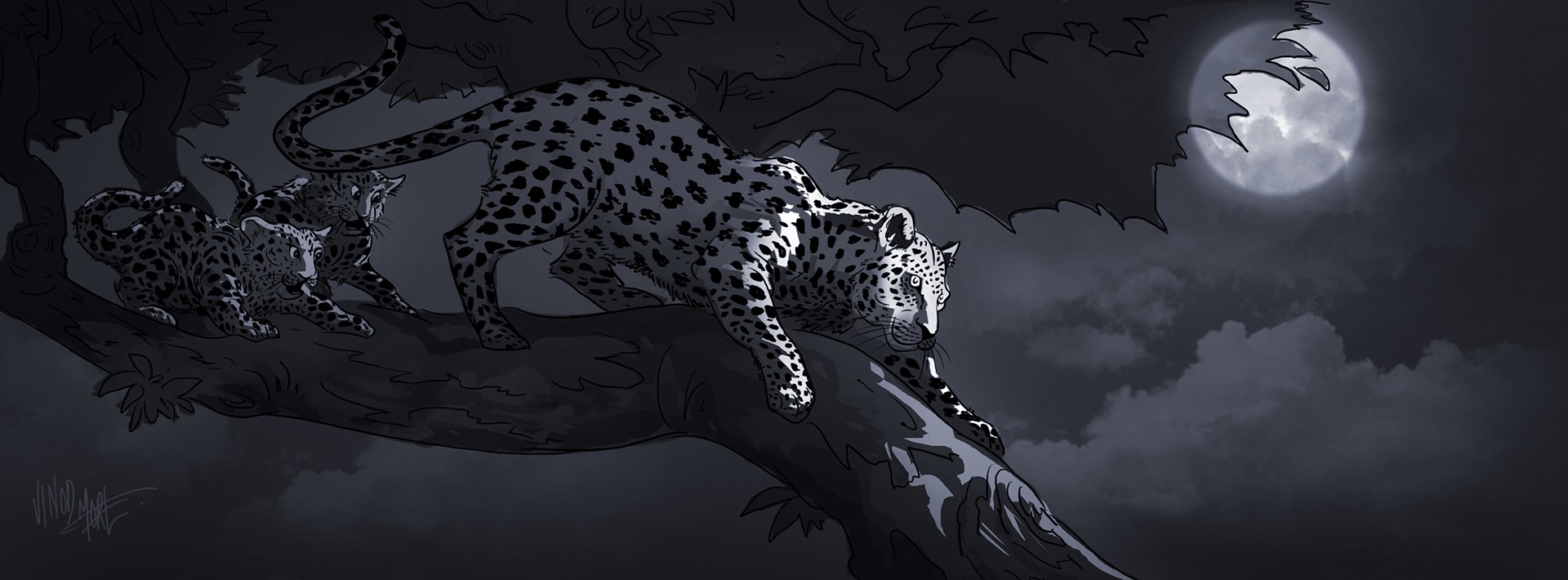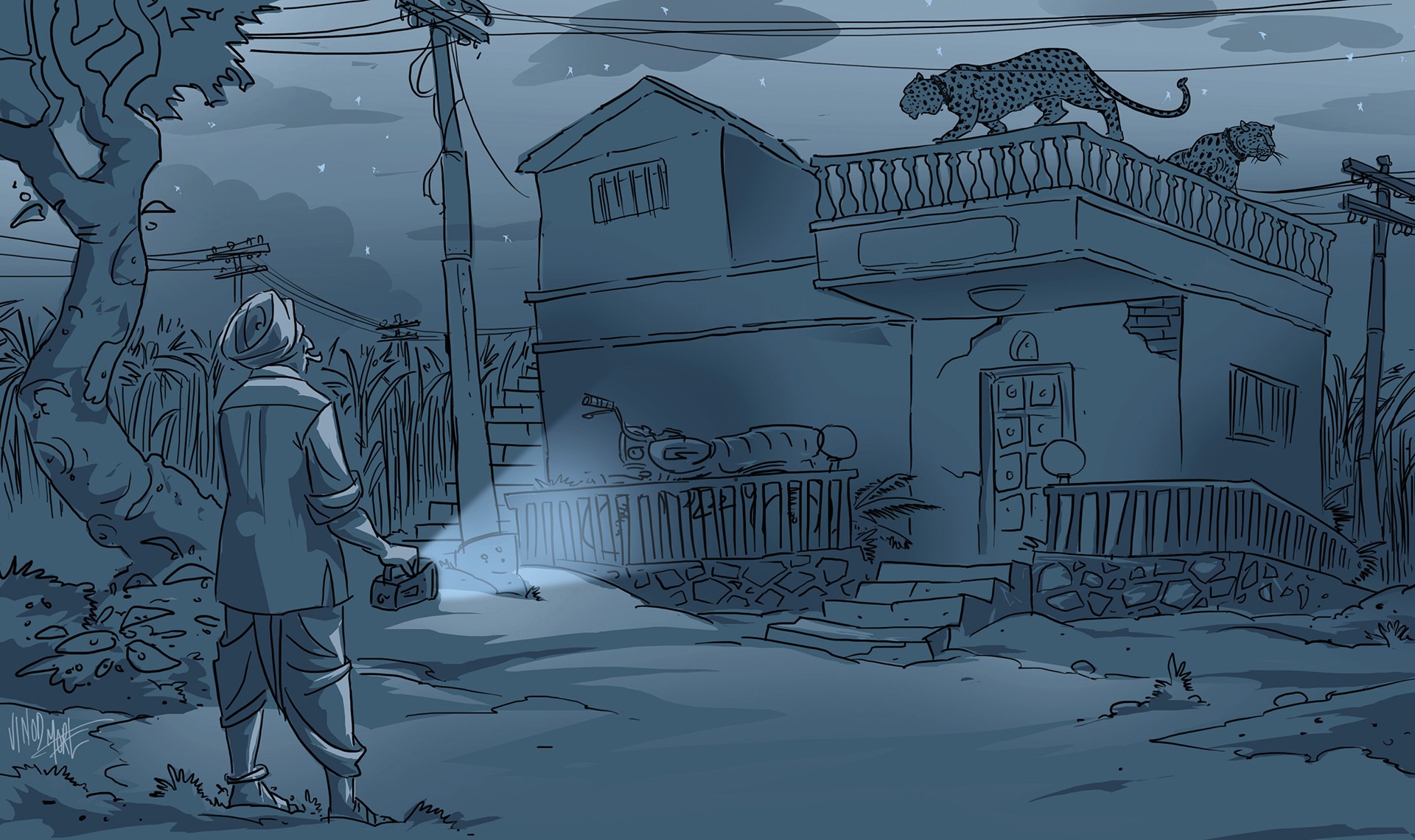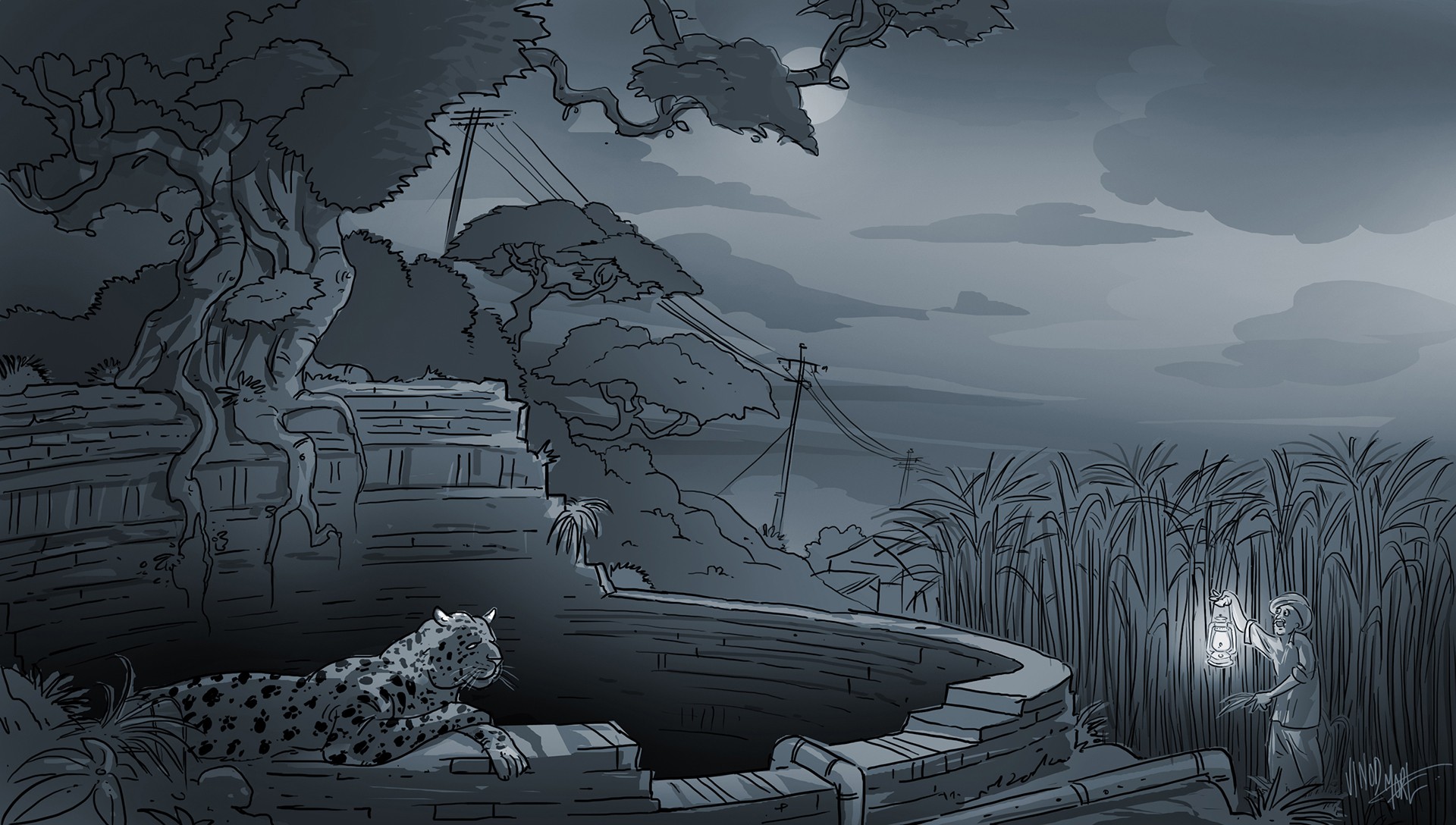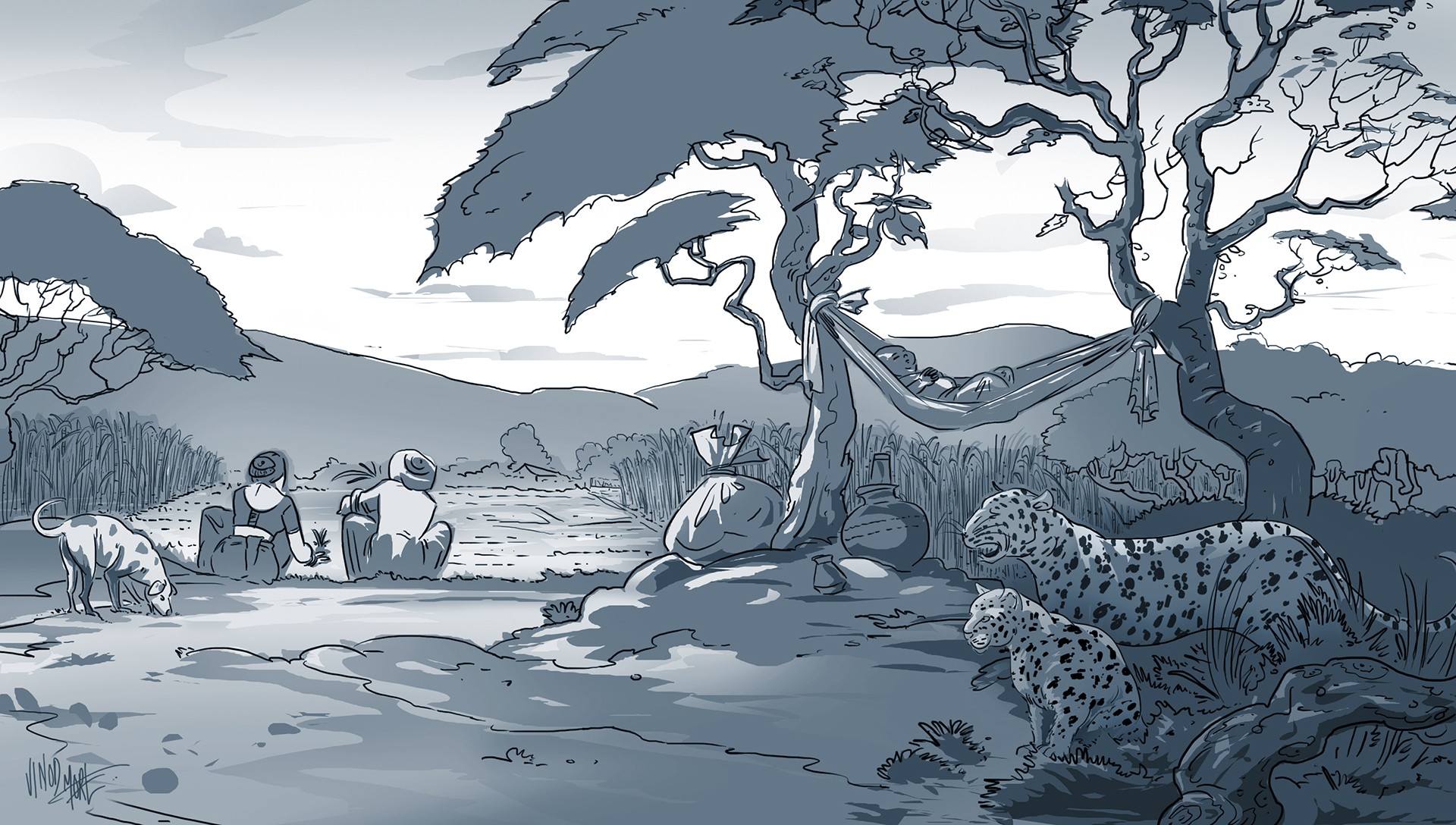I am born blind, no bigger than a puppy really. I depend on my mother for food and protection. She will take care of my brothers and sisters and me for at least six months, before we can help her hunt for food.
I am a common leopard and despite my name, I am no longer as common as I was before. My golden-yellow body is covered with strange black spots that are called rosettes. They are not truly spots, since they are hollow in the centre. Our distant cousin, the cheetah, has true spots. They are the fastest land animals on earth. Sometimes people confuse us for cheetahs. Sadly, there are no cheetahs in India anymore as they were all hunted down by humans 50 years ago.
Leopards like me are found in more than 70 countries around the world. We can live in forests, mountains, crop fields – anyplace where we have enough food and where we are not hunted. In India we are found in most states. We are happy to share space with humans, but we are wary of the two-legged creatures too, who always think of us as the enemy. We are very shy, and we try not to get in anyone’s way, but we do eat animals that live close to humans, such as dogs, goats, pigs and sometimes even small animals like rats. Sometimes, we are spotted by humans and then they surround us and try to kill us or trap us. We get very scared and end up injuring a few two-legged creatures while trying to escape. In some parts of the country, some of us are shot at with guns, in other parts we are trapped unnecessarily and moved to places we know nothing about. We feel very distressed in situations like these and attack humans in self-defence. However, in most places we can live alongside humans peacefully if they leave us alone.
Our lives are not easy, whether we live in the forests or in villages. In the forests we have to compete for food with our larger cousin, the tiger. In villages we have to adjust with humans for space. Humans destroyed our forests to grow crops, so we adjusted and began to live in crop fields and tea gardens. But humans still kill us out of fear and hunt us for our fur and bones.
Recently, scientists have started studying how we coexist with humans, and what humans can do to protect us. I have never met a scientist but I have heard they are very nice people. I have also heard that some scientists make us sleep with injections and put a radio-collar around our necks. They can then track us using these radio-collars to find out where we go and what we do. Some scientists also study our poop to find out what we eat. We like scientists because they do not fear us.
We like human children too. Sometimes, we injure them by mistake but we know that most of them love us. Children from western Maharashtra even act as our ambassadors. They talk to grown-ups and make them more aware about us. They insist on keeping the surroundings clean: this keeps the number of feral dogs and pigs low and the livestock well protected. If this is done, we stop looking for food in these areas, and there are fewer chances for conflict. I hope that many more little two-legged creatures come forward to support us too, so that we can coexist peacefully on this planet.
The illustrations are from the book Waghoba Tales: Adventures in Leopard Land.
Guest Editor Diaries: Of Leopards and Water Resources - Eight-year-old Guest Editor Shaurya Mantena assigns stories to the NiF team.
H2 Uh Oh! – Water sustainability consultant Shubha Ramachandran explains why water is critical for life.
Books: Spots and the Deep Blue – Children’s book author Bijal Vachharajani shares her picks for the month.






